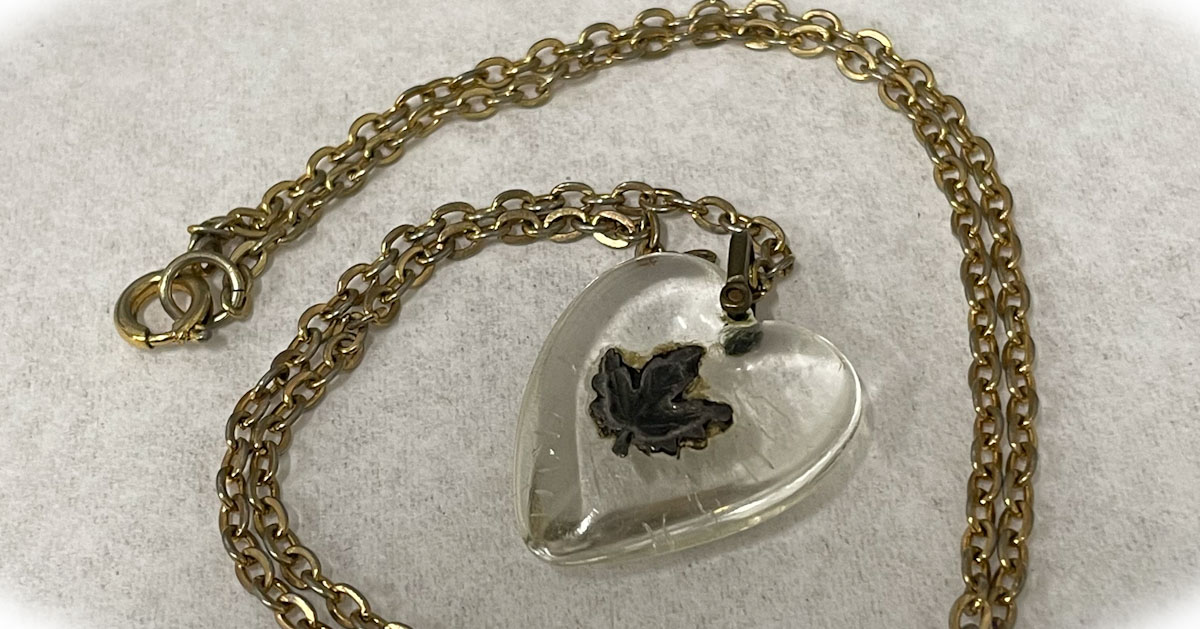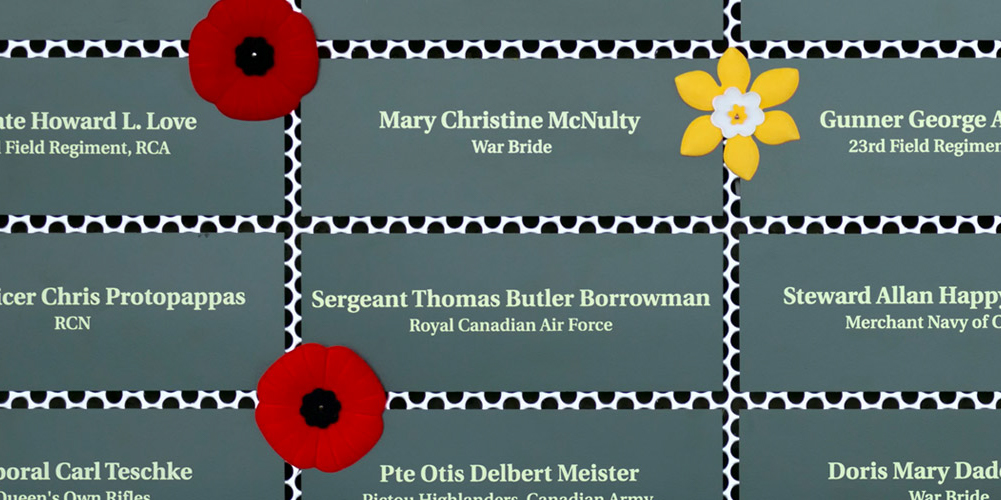
A heart of glass
A one-of-a-kind artifact was added to the Museum's collection last year and is on display in the War Brides section of the Pier 21 Story exhibition.
The heart-shaped glass pendant with a small brass maple leaf was a gift given to English-born Marjorie Englehart (nee Lewis) by her husband Frank Englehart, a Canadian soldier serving overseas during the Second World War.
After a German plane was shot down near him, Frank took a fragment of the windshield from the debris. He whittled it carefully into a heart-shaped pendant for his new wife. To add a special detail, he took a brass maple leaf from his uniform and added the decoration.
A family pulled apart by war
Marjorie was born in England and was just 15 when the war broke out in 1939. The war was a close reality for her. Her older brother Evan joined the Merchant Navy. Evan was away at sea when their father enlisted in the army and was shipped to the Middle East. He assumed he wouldn't see his son again until after the war, assuming that they both survived.
While being conveyed by convoy to the Middle East, her father was summoned to a room. When he arrived, out from under a table popped Evan - he was part of the same convoy and had asked to board his father's ship and surprise him.
At home, Marjorie faced unsettling new daily realities. Everyone was issued gas masks that they had to carry around in case of a gas attack. At home, they had a Morrison Table Shelter, a heavy steel sort of cage that the remaining family members could crawl into when there was an air raid.
Falling in love with a Canadian soldier
In March of 1944, she was set up on a blind date. Her friend Eve's mother had a young Canadian soldier staying with her during his leave. In her self-published memoir A War Bride’s Story, Marjorie says, "This day changed my life forever."
Frank asked to see her again the next weekend. He hoped she was feeling as lovestruck as he was - in fact, he was nervous she wouldn't. They had arranged to meet at London's Victoria station, but Frank arrived early and hid from view. He watched her pace up and down, looking for which train he would disembark from, reading her body language to see if she seemed to truly care for him. As she put it, "When he figured I had had enough 'torture' he made himself visible to me. Was I ever glad to see him."
Frank and Marjorie got engaged not long after. Frank asked the Canadian Army for permission to get married, but they had to wait two months before it was granted. They were married in July of 1944. Soon after, Marjorie was pregnant with her first child, Michael, and went into labour on Victory in Europe Day, May 8, 1945.

The move to Canada
But her move to Canada didn't happen right away. In September of that year, Frank was sent back to Canada for discharge, while Marjorie remained behind, living with her family. She wouldn't be sent to Canada until early 1946, arriving with baby Michael after a ten-day journey on February 3. They departed from Pier 21 aboard a train that evening, destined for Frank's hometown, Campbellton, New Brunswick. "Each time we stopped or passed through stations," she writes, "crowds were there waving and cheering us on our way."
Between April 1942 and March 1948, 43,464 war brides and their 20,995 children arrived in Canada, settling in cities, towns and farms across the country, an unforeseen but profound secondary impact of the conflict.
Marjorie never wore the necklace, instead keeping it in her jewellery case, but her kids always knew about it.
Marjorie’s legacy
When she died in January 2018 at the age of 94, she had nine children, 28 grandchildren, 37 great-grandchildren and six great-great-grandchildren.
This one-of-a-kind piece of jewellery was donated to the Museum in 2024 by their daughter, Carol Firlotte.

